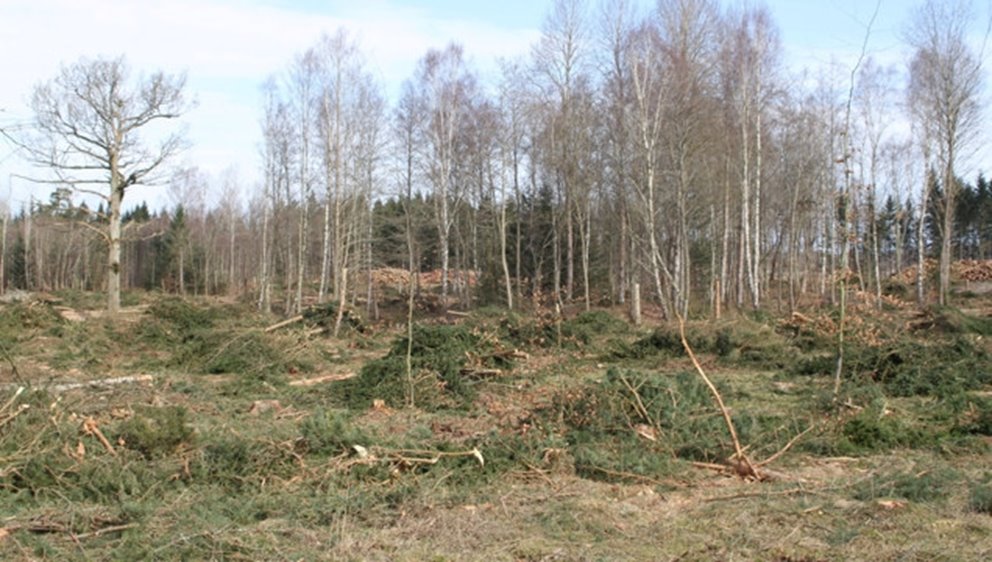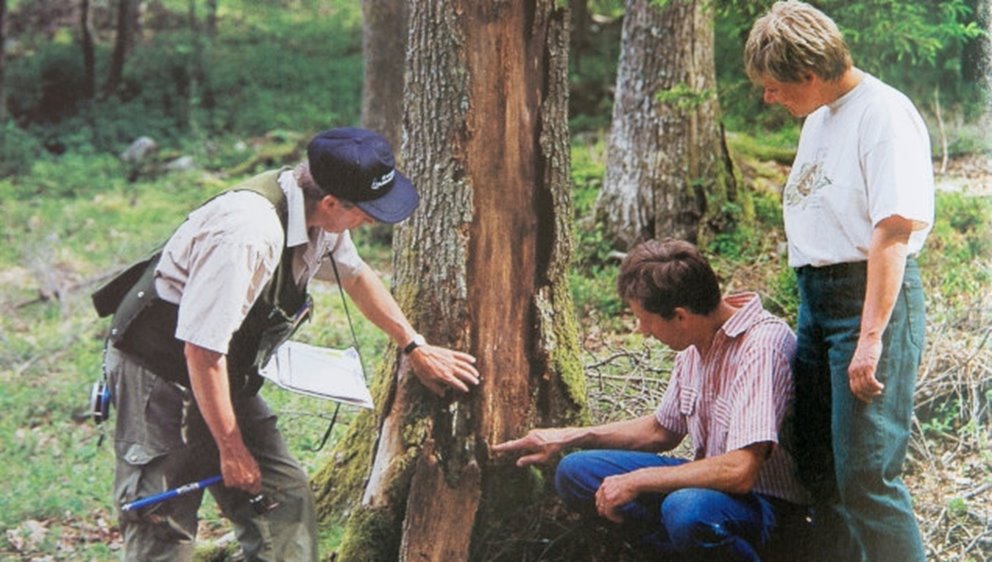The new forest policy marked the start of increased engagement in nature conservation issues. Södra's board quickly developed an ambitious action plan for nature conservation and timber production in combination and hired the experienced forest ecologist Gustaf Aulén.
Green Forestry Plans
In 1996, Södra launched the first green forestry plans in the country, where the big news was that they included four target codes for the management of different forest compartments on a property. The target codes are PG (Production with general nature consideration), K (Combined goals), NS (Nature conservation management), and NO (Untouched nature conservation). Södra's members have contributed with voluntary nature conservation set-asides of at least 130,000 hectares of productive forest land, which corresponds to an area of 200,000 football fields.
In 1997, Södra began following up nature considerations during Harvesting and compiling green accounts. The results from the accounts are an important tool for continuously improving various aspects of nature consideration.
Spreading Knowledge
To spread knowledge about forest ecology and offer suggestions for suitable nature conservation measures, Södra produced the book Liv i Skogen (Life in the Forest) in 1997. It was printed in an edition of 30,000 copies and distributed to members and used for many years as course material in training for, among others, officials and forest contractors. In 2011, another major book, Skogens vatten (The Forest's Water), was produced together with the other forest owner's associations. The book contains both practical advice for various conservation measures by water and a brand new way to assess the natural values of watercourses and classify them into four different blue target classes.
Green and Blue Licenses
Contractors who perform forest measures on behalf of Södra must have a green license. It is obtained through special training in nature and cultural environment conservation, as well as consideration of social interests. For those working with ditching and ditch maintenance, a blue license focusing on handling aquatic environments is also required.
Training in nature conservation biology, cultural environment conservation, and considerations in connection with forestry measures are now annually recurring activities. They are primarily aimed at Södra's forest officials, green planners, and elected nature conservation representatives.

Nature Conservation from a Landscape Perspective
In 2003, Södra launched a brand new tool called Forest Nature Value Regions for southern Sweden. The publication was developed in collaboration with the Swedish Forest Agency and Södra. The purpose of the nature value regions is to be able to weigh in the important landscape perspective in connection with forestry planning and prioritization of both voluntary set-asides and general consideration. A new revised and expanded edition of the Nature Value Regions came in 2015 and has sparked great interest among both other forest actors and authorities.

Forest certifications
Södra was an active part in the formation of PEFC (Programme for the Endorsement of Forest Certification Schemes), and in 2000 members began to be certified according to their standard. In 2009, Södra also joined the FSC® (Forest Stewardship Council), and most members are now double certified. In 2002, PEFC developed a certification system for forest contractors, which was an important step in reaching out with nature conservation messages to those who do most of the work in the forest. The certification also includes managing timber production responsibly and meeting certain social standards. Forest certification is thus a direct application of the forest policy goals.
Nature conservation work is never finished; it must be continuously pursued and developed. The key players are the members and the contractors who perform the work in the forest.

